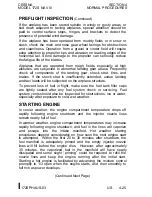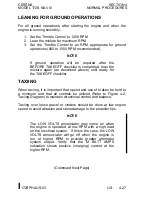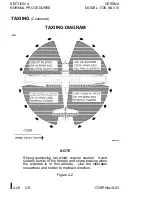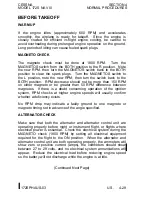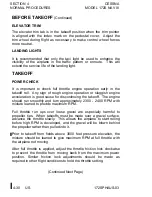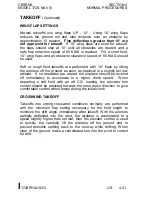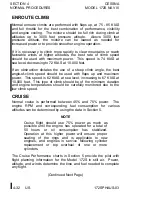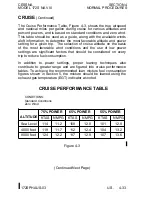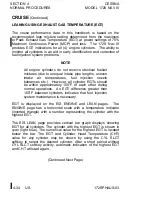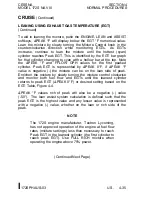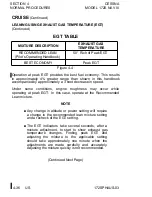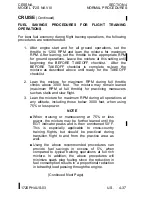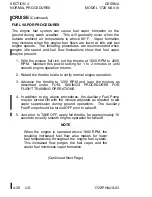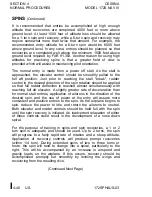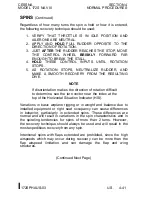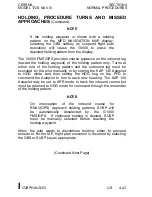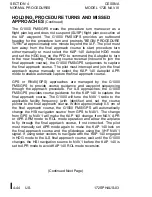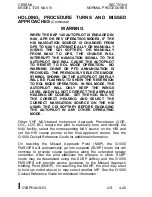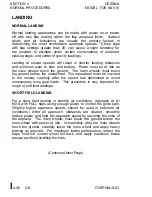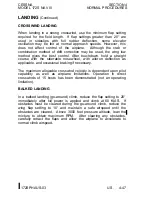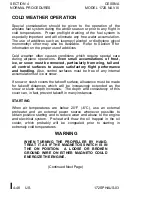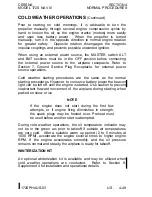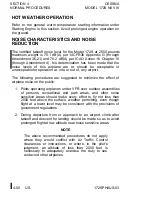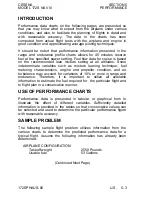
CESSNA
SECTION 4
MODEL 172S NAV III
NORMAL PROCEDURES
CRUISE
(Continued)
FUEL VAPOR PROCEDURES
(Continued)
In addition to the above procedures, the sections below should be
reviewed, and where applicable, adhered to:
Section 3 - Take note of the excessive fuel vapor procedures in
both the checklist and the amplified procedures
sections.
Section 4 - Take note of the hot weather operational notes and
procedures in both the checklist and the amplified
procedures sections.
Section 7
Take note of the altitude operational procedures and
the section on auxiliary fuel pump operation.
STALLS
The stall characteristics are conventional. An aural warning is
provided by a stall warning horn which sounds between 5 and 10
knots above the stall in all configurations.
Power off stall speeds at maximum weight for both forward and aft
C.G. positions are presented in Section 5.
SPINS
Intentional spins are approved when the airplane is operated in the
utility category. Spins with baggage loadings or occupied rear
seat(s) are not approved.
However, before attempting to perform spins several items should
be carefully considered to assure a safe flight. No spins should be
attempted without first having received dual instruction both in spin
entries and spin recoveries from a qualified instructor who is familiar
with the spin characteristics of the Cessna 172S NAV III airplane.
The cabin should be clean and all loose equipment (including the
microphone and rear seat belts) should be stowed or secured. For a
solo flight in which spins will be conducted, the copilot's seat belt
and shoulder harness should also be secured. Care should be
taken to ensure that the pilot can easily reach the flight controls and
produce maximum control travels.
(Continued Next Page)
172SPHAUS-04
U.S. 4-39

